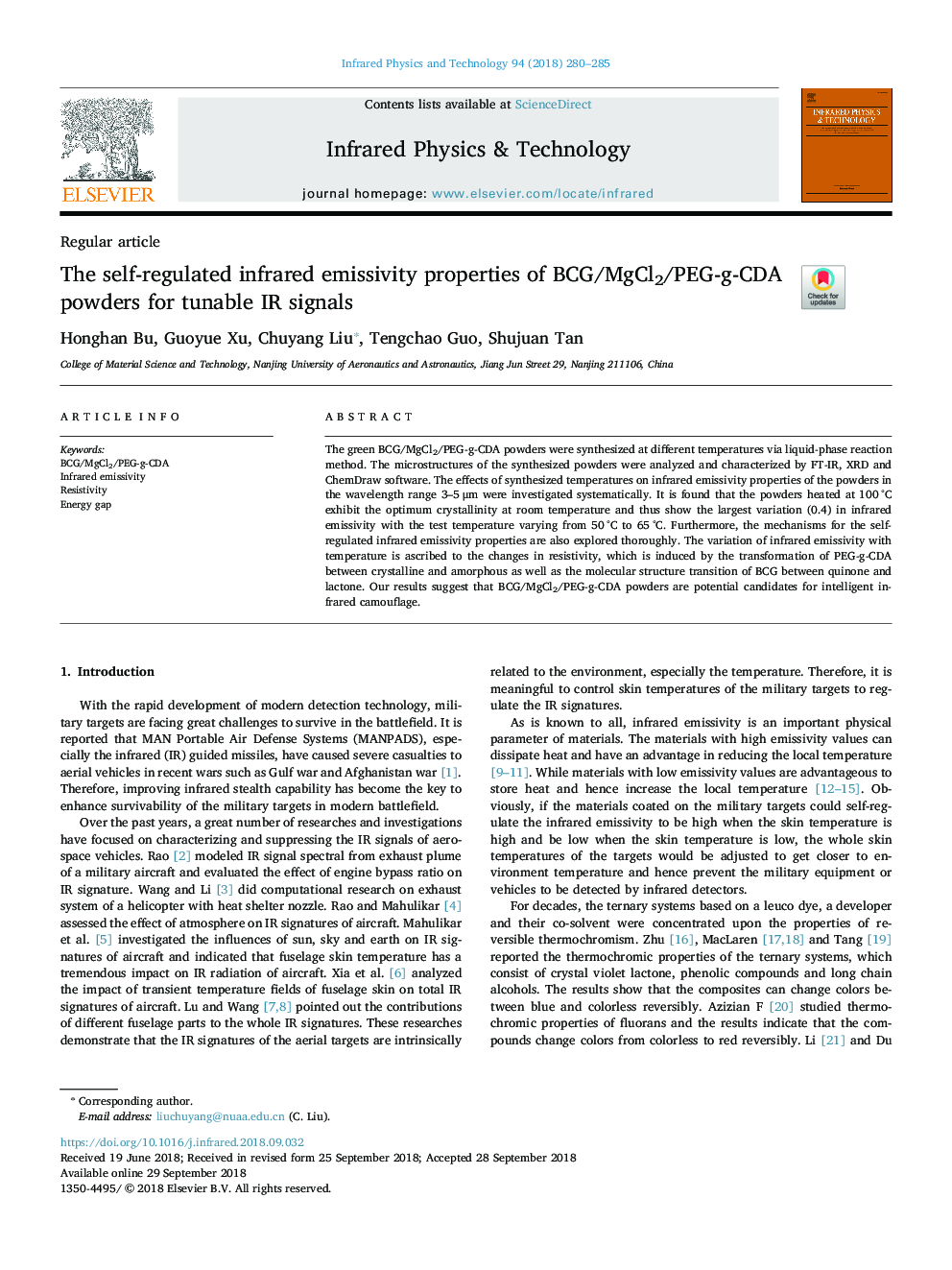| Article ID | Journal | Published Year | Pages | File Type |
|---|---|---|---|---|
| 11032098 | Infrared Physics & Technology | 2018 | 6 Pages |
Abstract
The green BCG/MgCl2/PEG-g-CDA powders were synthesized at different temperatures via liquid-phase reaction method. The microstructures of the synthesized powders were analyzed and characterized by FT-IR, XRD and ChemDraw software. The effects of synthesized temperatures on infrared emissivity properties of the powders in the wavelength range 3-5â¯Î¼m were investigated systematically. It is found that the powders heated at 100â¯Â°C exhibit the optimum crystallinity at room temperature and thus show the largest variation (0.4) in infrared emissivity with the test temperature varying from 50â¯Â°C to 65â¯Â°C. Furthermore, the mechanisms for the self-regulated infrared emissivity properties are also explored thoroughly. The variation of infrared emissivity with temperature is ascribed to the changes in resistivity, which is induced by the transformation of PEG-g-CDA between crystalline and amorphous as well as the molecular structure transition of BCG between quinone and lactone. Our results suggest that BCG/MgCl2/PEG-g-CDA powders are potential candidates for intelligent infrared camouflage.
Related Topics
Physical Sciences and Engineering
Physics and Astronomy
Atomic and Molecular Physics, and Optics
Authors
Honghan Bu, Guoyue Xu, Chuyang Liu, Tengchao Guo, Shujuan Tan,
